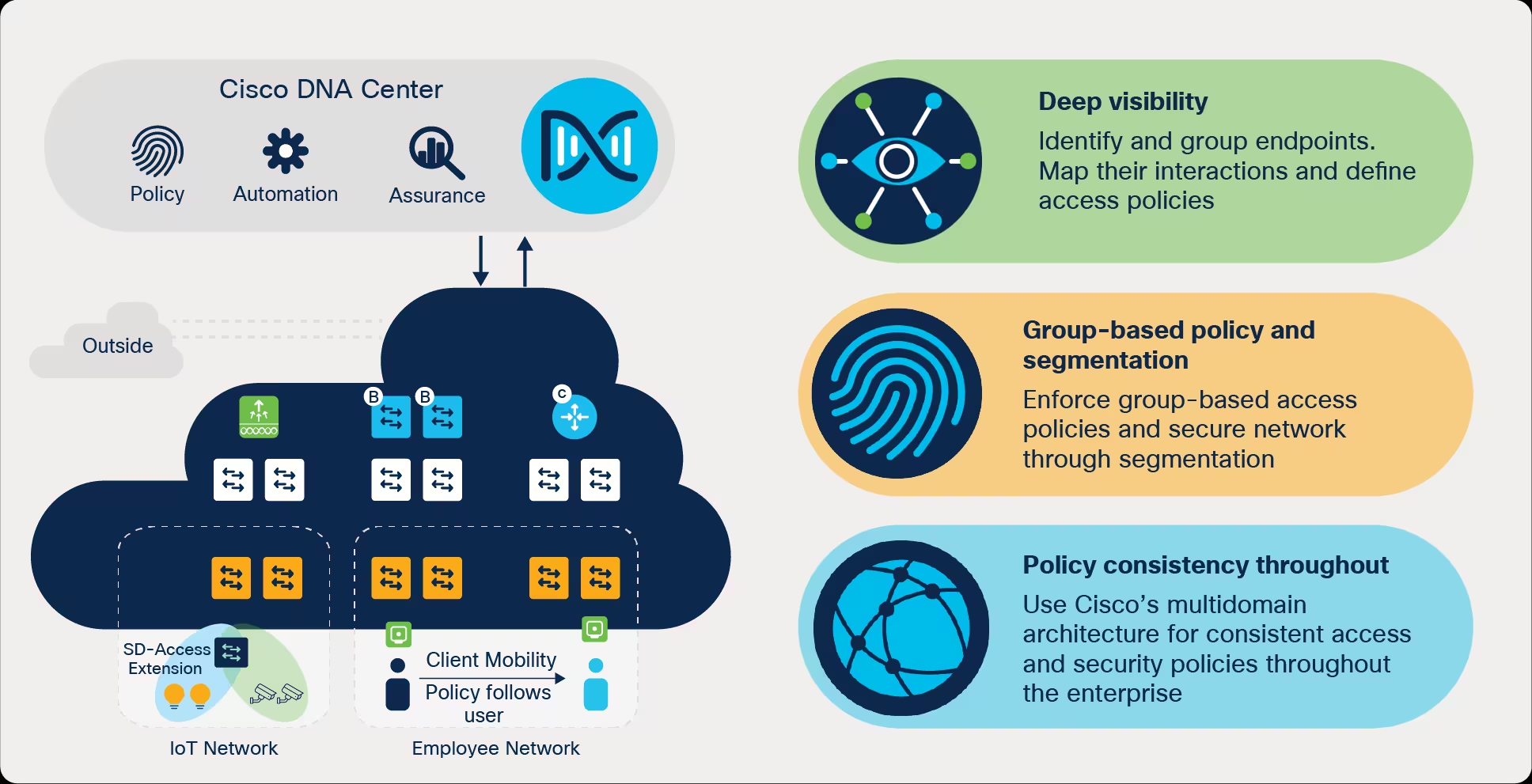Transition to Cisco Software Defined Access for State Government.
- Assessment and Planning:
- Evaluate the existing network infrastructure to identify areas for improvement.
- Determine the specific requirements and goals of the state government in terms of network performance, security, scalability, and manageability.
- Understanding SD-Access:
- Educate key stakeholders and IT personnel about the concepts and benefits of Cisco SD-Access.
- Conduct training sessions to ensure the IT team is equipped with the necessary skills to deploy and manage SD-Access.
- Design Phase:
- Collaborate with Cisco or certified partners to design a customized SD-Access solution tailored to the state government’s needs.
- Define network policies, segmentation requirements, and access control mechanisms.
- Deployment:
- Implement SD-Access architecture based on the design specifications.
- Deploy Cisco DNA Center for centralized management and automation of network tasks.
- Configure software-defined networking (SDN) controllers, switches, routers, and access points according to the defined policies.
- Integration:
- Integrate SD-Access with existing IT infrastructure and services seamlessly.
- Ensure interoperability with legacy systems and applications.
- Testing and Validation:
- Conduct thorough testing of the SD-Access deployment to ensure functionality, performance, and security.
- Validate policy enforcement, segmentation, and access control mechanisms.
Date:
November 23, 2021


